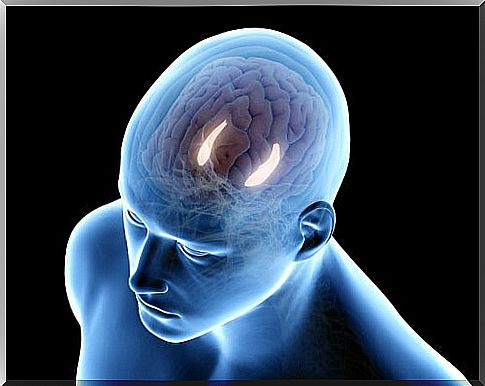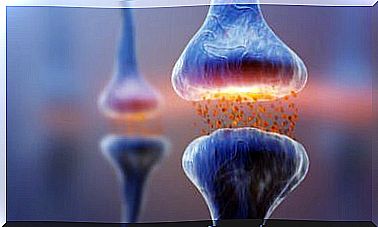The Paradox Of Panic Attacks

Because of the prevalence in the general population, surely we all know a person who has suffered or will suffer a panic attack at some point in their life, and therefore understanding the paradox of panic attacks is important.
Although we all know that a panic attack is closely related to anxiety – in fact, there are anxiety disorders that may or may not present panic attacks – the truth is that it seems a little intuitive disorder.
During the panic attack, one feels the tremendous sensation that one is going to die – it must not be forgotten that the physiological activation is abrupt and very intense, with annoying and sometimes terrifying symptoms for the person who feels them. However, the truth is that very few people, if not virtually none, have died from the symptoms of a persistent panic attack.
As a result, it is interesting to study the paradox of recurrent panic attacks, that is, that they do not appear in isolation. Why does a person have a panic attack again, and that fear of dying from the symptoms of the attack, if they have previously verified that they do not actually die? Why might the next panic attack be the same or even more intense?

Feedback from panic attack
Before talking about the paradox of panic attacks, it is important to know its mechanism. There are several explanatory models that outline the idea of feedback between various factors. These factors could be:
- Physiological or cognitive change of the person : physical efforts, anger, frustration, fear, bad times … We are talking about circumstances in general that can cause one to be tense.
- Perception of bodily changes : it is as easy as becoming aware of your heart or your rapid breathing to start worrying. However, there are panic attacks that can occur in the absence of this prior insight.
- Association with a threat : body changes are associated with something not going well, triggering even more fear or anxiety.
All three feed off each other — they become a positive feedback system — and once you’ve already had a heart attack symptom, you are very afraid that it might develop — for example, excessive sweating. The panic attack ends when a negative feedback element enters : sitting down, trying to relax, using different coping strategies …
There are primary symptoms (those that are noticed initially, choking, dizziness and heart racing) and secondary (sweating, trembling) that arise when giving a negative evaluation to these symptoms. They arise, in short, because people are confirming their beliefs that something is happening to them.
The cognitive theory of panic attack
Catastrophic thoughts are automatic and instantaneous in panic disorder and agoraphobia. These people also tend to have a bias in the negative interpretation of bodily sensations.
By having that bias in interpretation, they are people who find catastrophic meanings to those merely hinted at by particular contexts. For example, when saying out loud “the dog drinks …” , the usual thing is to end the phrase with “water”, “milk”, “from a river”, etc.
People with greater sensitivity to panic attack often end these sentences in a catastrophic way. For example, “my heart beats fast because…”, it could end in many ways: “because I have seen my girlfriend”, “because I am happy”, “because I have smoked a lot”, “because I am having a heart attack” . Those people will automatically see the last option instead of the previous three.
The key factor in the catastrophic interpretation is your degree of belief, not the number of symptoms. If these people believe that they are really going to die, they have the attack, even if they only have one symptom.
The paradox of panic attacks: why it doesn’t go away
When a person feels fear, for example, by mice, and is exposed to a room full of rodents with which they can play, they can touch and, above all, check that they do not pose a threat to them, the usual thing is that this phobia of the mice gradually disappear (habituation). This happens with practically every aspect of our life.
A child stops fearing school when he meets it and experiences that it is not a threat to him. A teenage girl can stop being afraid of the soccer ball once she starts playing and realizes that it is not such a threatening object, just as a man can stop being afraid of taking the car when he realizes that he is able to drive without having an accident.
This occurs thanks to exposure, a technique that allows habituation to that stimulus and the verification that none of the catastrophic consequences thought before undergoing the stimulus exposure itself does not occur.
In this way, the initial symptoms – such as palpitations, dizziness or dizziness – that scared us before having the first panic attack because they could lead to a heart attack, should not scare us now, since we have been able to verify that this attack heart fails to take place. This is not quite so.
People can have a single panic attack and never have another in their entire lives. However, there are also people who do have a panic attack again after the first, and others who go on to develop a panic disorder — with many weekly or even daily panic attacks. Although the answer should be extinguished, some explanatory elements are presented as to why the panic attack can occur again.
Equipotentiality of conditioning
There is more or less fear depending on the nature of the stimulus — marker vs. snake-. In the theory of preparatory, it is said that there are fears, phobias and panics that involve already prepared associations and whose extinction is slower. It is biological, it is acquired throughout evolution. We are more conditioned with those that threaten life – such as height, because we can fall.
For this reason, eliminating the fear that physical symptoms preceding a panic attack can enact is much more difficult. The same would happen with snakes, since one does not bite you – or you do not have a heart attack on that occasion – it does not mean that another snake can harm you – or that at some point in your life those symptoms may not be informing you that something is wrong.
Emotional memories in the hippocampus
According to the biochemist P. Quijada, the hippocampus is in charge of consolidating dangerous events in memory in the form of memories. This means that, as we experience panic attacks, they are “stored” in the hippocampus.
As a result, people with panic attacks have emotional memories of how bad they have been after that attack, and those traces with high emotional content are difficult to erase naturally.

Safety behaviors that exacerbate the problem
Prior to the attacks, especially those people who suffer from a panic disorder, it is about avoiding those situations or stimuli that we believe have been able to enhance that panic attack. These situations are conditioned to discomfort, and are avoided.
Avoiding a situation, or carrying out safety behaviors, causes the problem to grow and get worse. The paradox of panic attacks is not the only one that exists, but also the paradox of anxiety-avoidance-anxiety.
Panic attack as fear itself
The fact that a threat does not materialize after a panic attack is not a confirmation that there is nothing to fear. On the contrary, a new panic attack does not become the non-confirmation of your fear, but the almost achievement of it.
They find having a heart attack almost as dangerous as having a panic attack. Even if they do not die, that is not relevant for them, because they have returned to be “about to die.”
Panic attacks and panic disorders are conditions that, although they are postulated as unpleasant and very disabling, the truth is that the treatment is effective and fast.
Through psychoeducation, cognitive restructuring, behavioral techniques – relaxation, breathing – along with behavioral experiments, attentional refocusing techniques, and, of course, response prevention exposure, people with recurrent panic attacks may no longer feel one never again.









